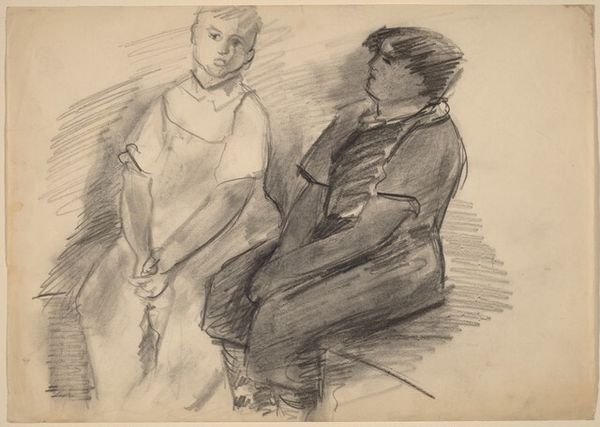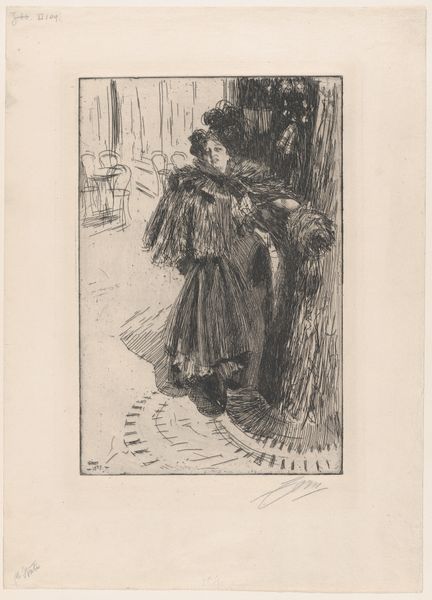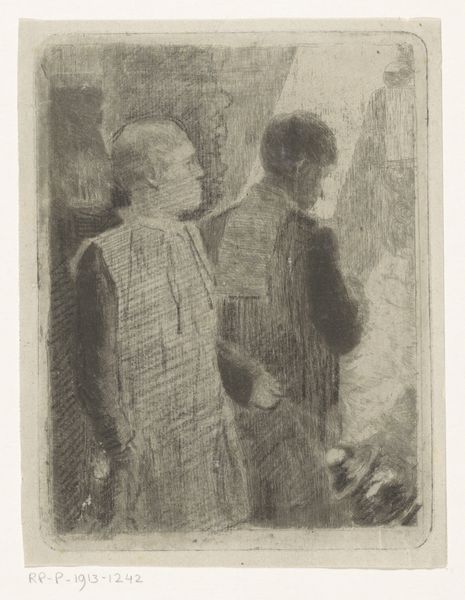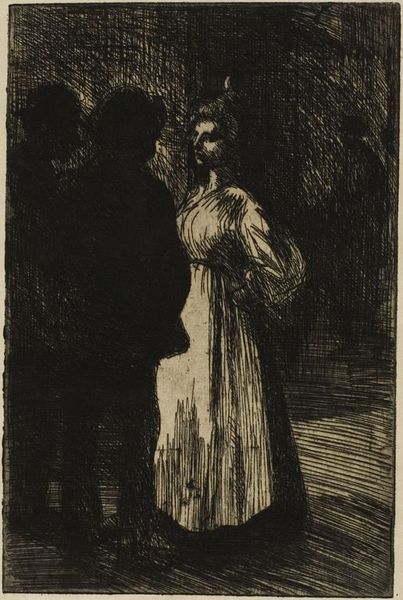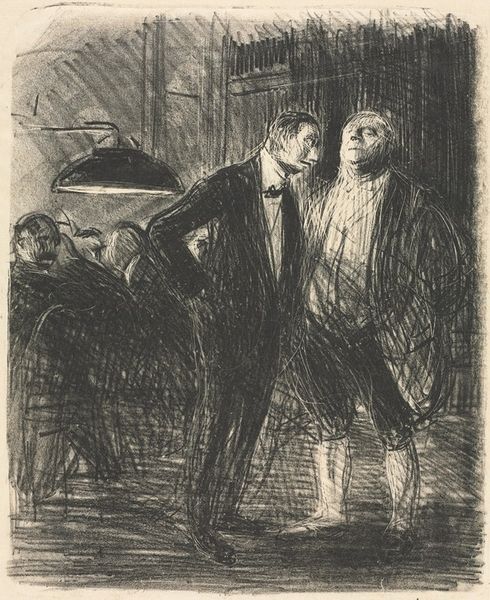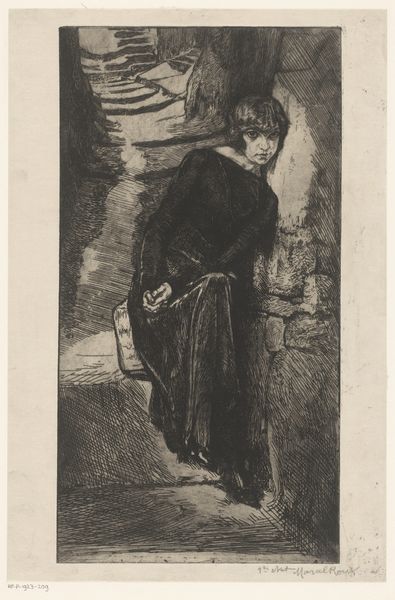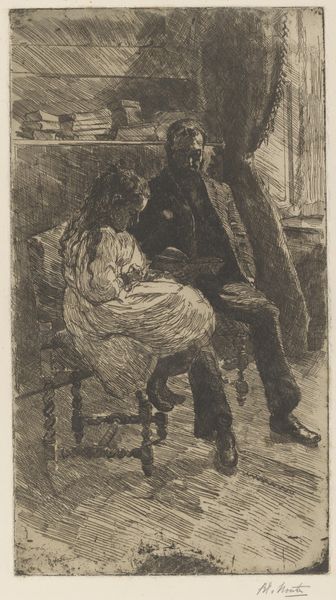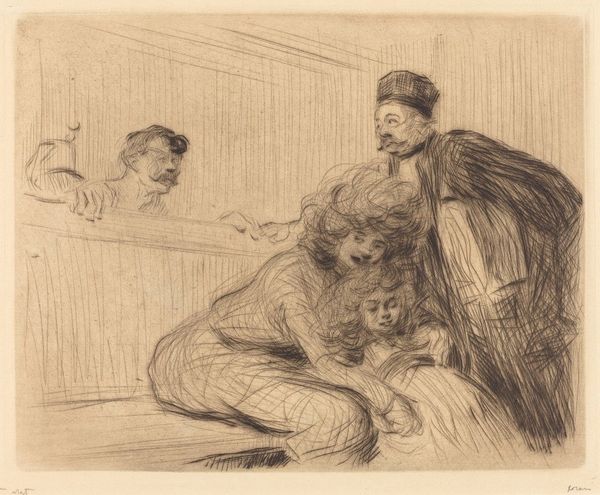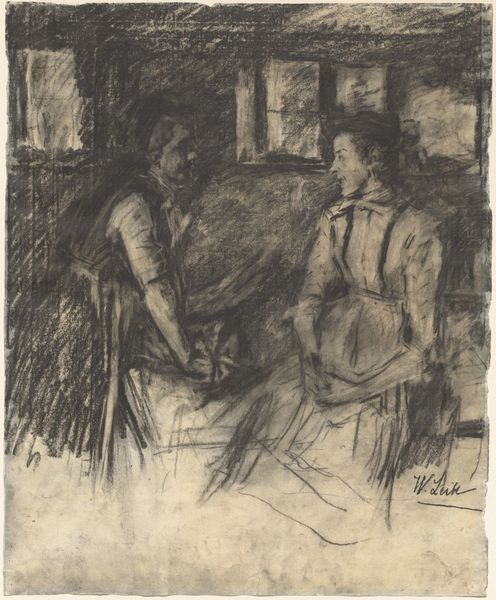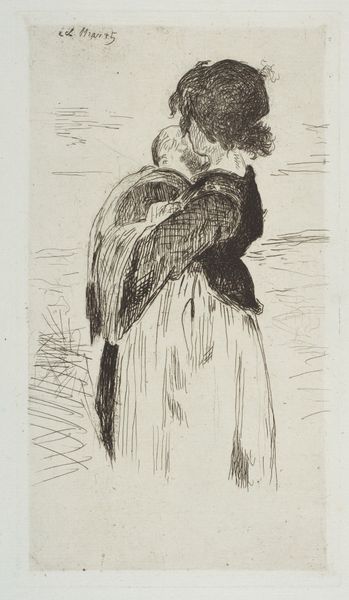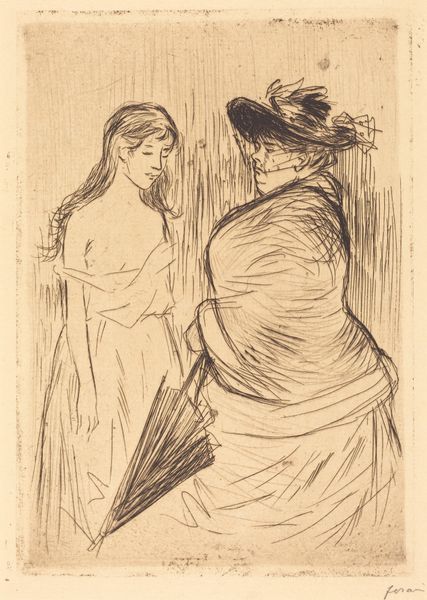
drawing, print, etching
#
portrait
#
drawing
#
art-nouveau
# print
#
etching
#
figuration
Copyright: National Gallery of Art: CC0 1.0
Editor: Here we have Théophile Alexandre Steinlen's 1902 etching, "The Encounter". It's all in blacks and grays, depicting two women in what seems like a hushed conversation. It's interesting how much texture and shading he achieved using this method. What’s your perspective on it? Curator: Well, let's think about printmaking at the turn of the century. Etching allowed for relatively inexpensive reproduction, bringing art to a wider audience. Consider who was consuming this type of imagery. Were these depictions aimed at, or about, the working class in Paris? How might the materials and the reproductive nature of the etching influence its reception? Editor: So, it's less about the singular image and more about its accessibility and who it reached? I guess that makes sense. Curator: Precisely. Look at the linework—scratchy, almost hurried. What does that suggest about the artist's process? Is it a deliberate aesthetic choice, or reflective of the demands of producing for a larger audience? Editor: I hadn’t thought about the labor involved that way, the pressure to produce. Now I see how the choice of etching itself connects to the social landscape. The artist's process, the materials... it's all tied to distribution and reception. Curator: And think about what the encounter represents. Are they negotiating something, perhaps exchanging information or engaging in a transaction of some kind? How do you interpret this 'encounter' in terms of social or economic exchange? Editor: So much to consider when thinking about art through the lens of production and consumption! It definitely enriches the experience. Curator: Indeed! Examining art through a materialist lens reveals so much more than just aesthetics.
Comments
No comments
Be the first to comment and join the conversation on the ultimate creative platform.
